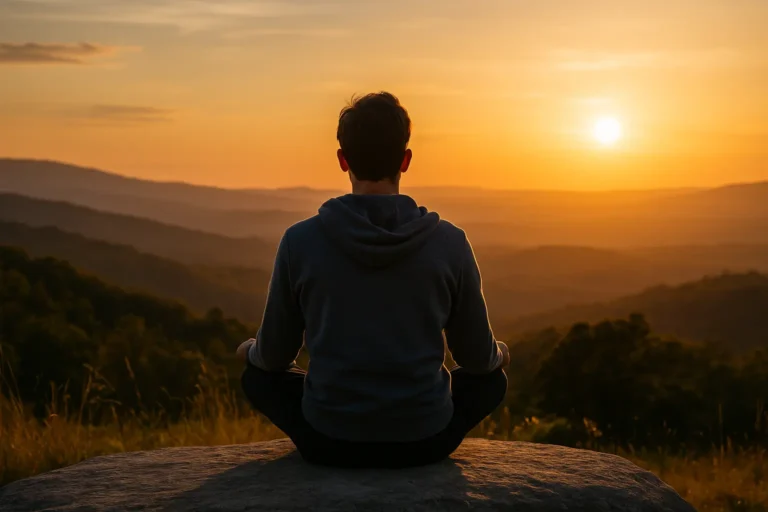Antarvafna is a timeless concept that represents the act of deep internal observation. It comes from Sanskrit, where “antar” means “within” and “vafna” implies reflection or introspection. Together, they form a practice of turning one’s focus inward to assess emotions, thoughts, and behaviors without judgment.
In a world filled with distractions and external noise, the practice of antarvafna offers a quiet retreat. It’s about pausing, looking inside ourselves, and understanding what drives our reactions and decisions. This inner dialogue, when nurtured regularly, can be a powerful tool for emotional intelligence and spiritual depth.
Those who engage in antarvafna often describe it as a mirror that reflects the true self—flaws, fears, strengths, and dreams. Instead of relying solely on external validation, they find confidence and clarity from within.
The Origins and Purpose of Antarvafna
Historically, antarvafna was practiced by sages, spiritual seekers, and those engaged in lifelong learning. It formed a key part of disciplines like yoga, meditation, and self-inquiry traditions in ancient India.
The goal wasn’t just to find peace but to unravel deeper truths about human existence. Practitioners used antarvafna to become aware of the subconscious mind, question limiting beliefs, and ultimately attain liberation from mental suffering.
In modern terms, it translates to better understanding ourselves—why we think a certain way, where our fears originate, and how we can break free from unhealthy patterns.
How Antarvafna Improves Your Life
Practicing antarvafna isn’t just spiritual—it’s deeply practical. By exploring your inner world regularly, you cultivate emotional intelligence, a trait often linked to better relationships and leadership qualities. It also improves mental clarity, helping you distinguish between reaction and response.
When faced with stress, someone who practices antarvafna can remain grounded. They’ve trained their minds to notice discomfort without being overwhelmed. Over time, this builds resilience and fosters a deeper sense of peace.
Additionally, antarvafna helps with goal setting. When you know your core values and motivations, your choices become more intentional. You spend less time chasing fleeting desires and more time pursuing meaningful paths.
Simple Ways to Practice Antarvafna Daily
Incorporating antarvafna into your routine doesn’t require isolation or hours of meditation. Small, consistent habits make a big difference. Begin your day with five minutes of quiet reflection. Ask yourself how you feel—not what you need to do, but what you truly feel.
Another effective method is journaling. At night, write about one event from the day that triggered a strong emotion. Try to observe it without judgment. Why did it affect you that way? What does it reveal about your expectations or past experiences?
Breathing exercises also enhance the antarvafna process. Controlled breathing quiets the mind, making it easier to hear the inner voice often buried under stress or fatigue. Even walking in nature can become a meditative practice if done with full awareness.
The key is to be patient. Antarvafna isn’t about quick fixes—it’s about cultivating a relationship with yourself over time.
Overcoming the Challenges of Self-Reflection
Like any practice, antarvafna comes with challenges. One of the most common is overthinking. It’s easy to confuse reflection with rumination, where we endlessly replay negative events. To avoid this, set clear intentions. Frame your thoughts around growth, not guilt.
Another challenge is emotional discomfort. Facing truths about ourselves can be unsettling. It might reveal insecurities or past regrets. But growth often comes from discomfort. If these feelings arise, remind yourself that they’re a part of the healing process.
Lastly, consistency can be hard. Life gets busy, and introspection may seem like a luxury. But just ten mindful minutes a day can rewire your mindset over time. If you miss a day, don’t give up. Antarvafna isn’t about perfection—it’s about presence.
Why Antarvafna Matters More Than Ever
In today’s fast-moving, hyper-connected society, we’re encouraged to look outward for answers—likes, followers, achievements. But these rarely satisfy for long. Antarvafna redirects that search inward. It tells us that everything we seek—peace, clarity, purpose—already exists within.
As mental health challenges rise globally, tools like antarvafna are becoming more vital. They empower individuals to understand their emotional landscape without needing constant external input. When more people practice self-awareness, it contributes to healthier families, workplaces, and communities.
By integrating antarvafna into everyday life, we learn to live more authentically. We make decisions aligned with our values, respond rather than react, and develop a deep-rooted sense of calm that’s not easily shaken.
Conclusion
Antarvafna is more than a spiritual concept—it’s a practical approach to living with clarity and intention. By dedicating time to self-reflection, we unlock greater emotional balance, clearer thinking, and a stronger connection with our true selves.
Whether you’re new to introspection or have walked the self-awareness path for years, antarvafna is a timeless guide. It reminds us that while the world constantly changes, the answers we seek often lie within.
FAQs
1. What does antarvafna mean?
Antarvafna is the practice of looking inward to reflect on one’s thoughts, emotions, and motivations for greater self-understanding.
2. Is antarvafna a religious practice?
No, it’s rooted in ancient philosophy but can be practiced by anyone seeking personal clarity, regardless of religious belief.
3. Can antarvafna help with stress?
Yes, regular self-reflection helps you respond calmly to stress and build emotional resilience over time.
4. Do I need to meditate to practice antarvafna?
Not necessarily. Meditation helps, but simple reflection or journaling can also support antarvafna.
5. How often should I practice antarvafna?
A few minutes daily is a good start. Consistency matters more than duration.


